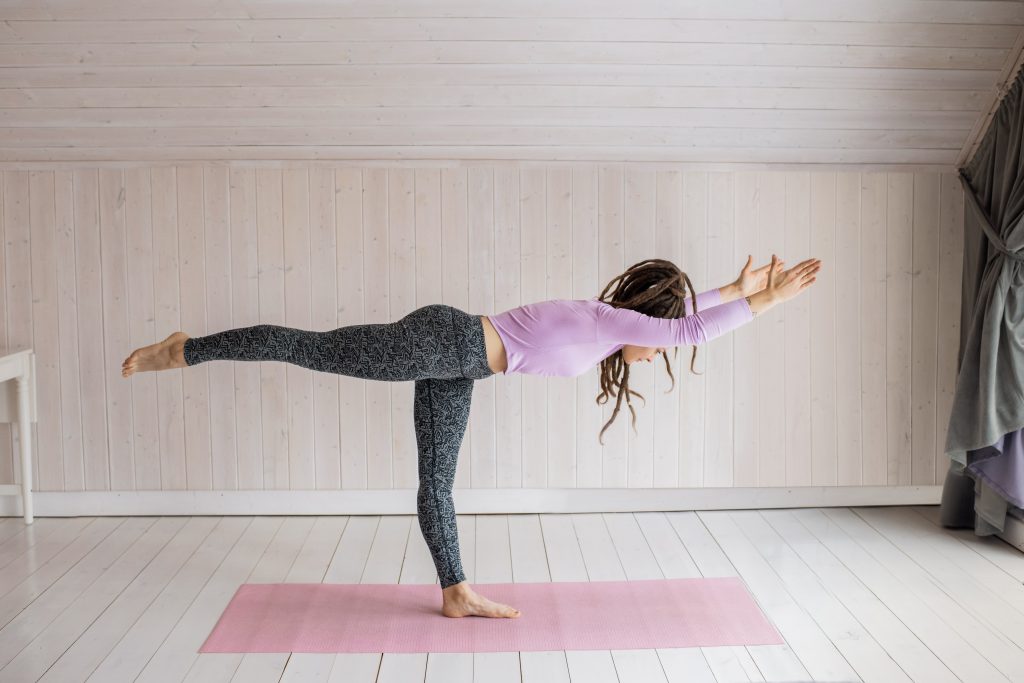Discover how incorporating yoga into your chronic pain management routine can provide numerous benefits.
Exploring the Benefits of Yoga for Chronic Pain Management
Are you tired of dealing with chronic pain? Does it feel like a constant battle that you just can’t seem to win? Well, have you ever considered exploring the benefits of yoga for chronic pain management? Yes, you heard that right – yoga! This ancient practice has been praised for its ability to heal the mind, body, and soul. And when it comes to chronic pain, yoga might just be the missing puzzle piece you’ve been searching for. So, let’s dive deep into the world of yoga and uncover its incredible potential for easing your pain and improving your quality of life.
Understanding Chronic Pain

Before we delve into the wonderful benefits of yoga, let’s take a moment to understand what chronic pain really is. It’s not just a nagging sensation that comes and goes – oh no! Chronic pain is like an unwelcome house guest that overstays its welcome. It’s pain that persists for an extended period, typically more than three months. This persistent pain can stem from a variety of sources, such as injuries, arthritis, fibromyalgia, or even conditions like migraines or back problems. Chronic pain can be debilitating, affecting your physical and emotional well-being.
The Science Behind Chronic Pain
Now, let’s dig a little deeper into the science behind chronic pain. You see, pain receptors in our bodies send signals to the brain that something is not quite right. These signals act as warning signs, alerting us to potential danger or injury. However, in the case of chronic pain, these signals continue to fire even after the initial injury or condition has healed. It’s like an alarm system that’s stuck in the on position, causing distress and discomfort.
Common Conditions Associated with Chronic Pain
Chronic pain can manifest in various forms and affect different parts of the body. Some common conditions associated with chronic pain include:
- Fibromyalgia: A condition characterized by widespread musculoskeletal pain.
- Migraines: Severe headaches that often come with additional symptoms like nausea and sensitivity to light and sound.
- Arthritis: Inflammation of the joints, resulting in pain and stiffness.
- Back Problems: Issues in the spinal area, such as herniated discs or sciatica.
Let’s explore each of these conditions in more detail:
Fibromyalgia
Fibromyalgia is a complex condition that affects the muscles and soft tissues. It is characterized by widespread pain, fatigue, and tenderness. People with fibromyalgia often experience a heightened sensitivity to touch and pressure, making everyday activities challenging. The exact cause of fibromyalgia is unknown, but it is believed to involve a combination of genetic, environmental, and psychological factors. Treatment for fibromyalgia focuses on managing symptoms through a multidisciplinary approach, including medication, physical therapy, and lifestyle changes.
Migraines
Migraines are not your average headache. They are intense, throbbing headaches that can last for hours or even days. In addition to the head pain, migraines often come with other symptoms such as nausea, vomiting, and sensitivity to light and sound. Migraines can be triggered by various factors, including stress, hormonal changes, certain foods, and environmental stimuli. Treatment for migraines may involve medication to relieve pain and prevent future attacks, as well as lifestyle modifications to identify and avoid triggers.
Arthritis
Arthritis is a common condition that affects the joints, causing pain, swelling, and stiffness. There are many different types of arthritis, including osteoarthritis, rheumatoid arthritis, and psoriatic arthritis. Osteoarthritis is the most common form and is caused by wear and tear on the joints over time. Rheumatoid arthritis, on the other hand, is an autoimmune disease where the body’s immune system mistakenly attacks the joints. Treatment for arthritis aims to reduce pain and inflammation, improve joint function, and prevent further damage. This may include medication, physical therapy, and lifestyle modifications.
Back Problems
Back problems encompass a range of conditions that affect the spine, muscles, and nerves in the back. Some common back problems include herniated discs, sciatica, and spinal stenosis. Herniated discs occur when the soft cushioning discs between the vertebrae in the spine rupture or bulge, putting pressure on nearby nerves. This can result in pain, numbness, and weakness in the affected area. Sciatica refers to pain that radiates along the path of the sciatic nerve, which runs from the lower back down the legs. Spinal stenosis is a narrowing of the spinal canal, which can compress the nerves and cause pain. Treatment for back problems depends on the specific condition and may include medication, physical therapy, and in some cases, surgery.
By understanding the various conditions associated with chronic pain, we can better appreciate the challenges faced by individuals living with this persistent discomfort. It is important to approach chronic pain with empathy and seek appropriate medical care to manage and alleviate symptoms.
The Basics of Yoga
Now that we have a better understanding of chronic pain, let’s explore the basics of yoga. Yoga is so much more than just a way to show off your impressive flexibility – it’s a holistic approach to well-being that combines physical postures (asanas), breathing exercises (pranayama), and meditation. The word “yoga” itself means union or connection, and this ancient practice aims to harmonize the mind, body, and spirit.
Yoga has a rich history that dates back thousands of years. It originated in ancient India and has since spread to all corners of the globe. The practice has evolved and adapted over time, incorporating various philosophies and techniques from different cultures.
Yoga: More Than Just Exercise
Contrary to what some might think, yoga is not solely about getting into pretzel-like positions. It’s about cultivating self-awareness, finding balance, and establishing a sense of inner calm. Yes, the physical aspect is undoubtedly essential, but it’s merely one piece of the puzzle. Yoga also incorporates elements of mindfulness and meditation, inviting you to explore the depths of your being and embrace the present moment.
When you step onto your yoga mat, you enter a sacred space where you can let go of the outside world and focus on your inner journey. It’s a time to connect with your breath, to feel the sensations in your body, and to quiet the chatter of the mind. Through regular practice, yoga can help you develop a greater sense of self-awareness and a deeper connection to yourself and others.
Different Styles of Yoga
Yoga comes in many flavors, like a delicious buffet of wellness. Each style offers its own unique blend of physical postures and philosophical approaches. Here are a few popular styles:
- Hatha Yoga: A gentle and beginner-friendly style that focuses on aligning the body and breath. Hatha yoga classes typically involve holding poses for longer durations, allowing for a deeper exploration of each posture.
- Vinyasa Yoga: A more dynamic and flow-based practice that synchronizes movement with breath. Vinyasa classes often involve a series of fluid and continuous movements, creating a dance-like flow.
- Yin Yoga: A slow and meditative style that targets deep connective tissues and promotes relaxation. Yin yoga poses are held for several minutes, allowing for a gentle stretch and an opportunity to cultivate stillness in the body and mind.
- Restorative Yoga: A soothing practice that uses props to support the body in long-held poses, promoting deep rest. Restorative yoga is all about relaxation and rejuvenation, providing a nurturing space for the body to heal and recharge.
These are just a few examples of the diverse range of yoga styles available. Whether you prefer a gentle and introspective practice or a more vigorous and energetic one, there is a style of yoga that can suit your needs and preferences.
Regardless of the style you choose, the underlying principles of yoga remain the same – to cultivate mindfulness, promote physical well-being, and foster a sense of inner peace. So, roll out your mat, take a deep breath, and embark on a journey of self-discovery through the ancient practice of yoga.
The Intersection of Yoga and Chronic Pain
Now let’s explore the beautiful union of yoga and chronic pain. You might be wondering, how can striking a pose or taking deep breaths alleviate my pain? Well, my friend, the answer lies in the transformative effects of yoga on the body and mind.
Yoga’s Impact on the Body
When practiced mindfully, yoga can help improve your flexibility, strength, and posture. It gently stretches and strengthens muscles, while also increasing blood flow and nourishing the joints. By incorporating yoga into your routine, you’re giving your body the love and attention it deserves. And when your body feels better, your pain levels might just start to ease up a bit.
Mental Health Benefits of Yoga
Chronic pain not only affects your physical well-being but also takes a toll on your mental health. This is where yoga truly shines! Through its focus on breath awareness and meditation, yoga can help soothe an overactive mind, reduce stress, and promote relaxation. It’s like pressing the reset button for your brain, allowing you to find solace amidst the chaos of chronic pain.
Yoga Techniques for Pain Management
Now that we’ve established the wonders of yoga, let’s explore some specific techniques that can aid in pain management. Brace yourself – we’re about to dive into a pool of rejuvenating exercises and postures!
Breathing Exercises and Their Benefits
Never underestimate the power of a deep breath! Certain breathing exercises, or pranayama, have the ability to calm your nervous system, reduce tension, and even decrease your perception of pain. One popular practice is the “4-7-8” breath – inhale deeply for a count of four, hold the breath for a count of seven, and exhale for a count of eight. Repeat this cycle a few times, and you might just feel the tension melting away.
Yoga Poses for Pain Relief
Ready to strike a pose? Here are a few yoga asanas that can bring some much-needed relief to specific areas of your body:
- Child’s Pose (Balasana): Gently stretches the lower back, hips, and thighs.
- Downward-Facing Dog (Adho Mukha Svanasana): Relieves tension in the shoulders, back, and hamstrings.
- Cat-Cow Pose (Marjaryasana-Bitilasana): Promotes spinal flexibility and releases tension in the neck and back.
- Standing Forward Fold (Uttanasana): Relaxes the spine, stretches the hamstrings, and encourages deep breathing.
Incorporating Yoga into Your Pain Management Routine
Now that you’re armed with all this yoga knowledge, it’s time to put it into action! Here are a few tips to help you incorporate yoga into your pain management routine:

Starting Yoga: Tips for Beginners
No need to feel overwhelmed – everyone starts somewhere! Begin with gentle and beginner-friendly styles like Hatha or Yin Yoga. Explore local classes or online tutorials to find a practice that resonates with you. Remember, it’s essential to listen to your body and respect its limitations. Modify poses as needed and always prioritize your safety and well-being.
Maintaining a Regular Yoga Practice
Consistency is key! Instead of sporadic bursts of yoga here and there, aim for a regular practice. Even dedicating just a few minutes each day can make a world of difference. Create a sacred space in your home, roll out your mat, and let yoga become a cherished part of your pain management routine. Set realistic goals and celebrate each milestone along the way – you’ve got this!
So, my friend, it’s time to embrace the wonderful world of yoga and all the benefits it holds for chronic pain management. Explore different styles, find the ones that resonate with you, and let the healing journey begin. Remember, it’s not just about the physical postures – it’s about finding peace, balance, and a renewed sense of vitality. So, roll out your mat, take a deep breath, and let yoga guide you on your path to pain-free living. Namaste!







